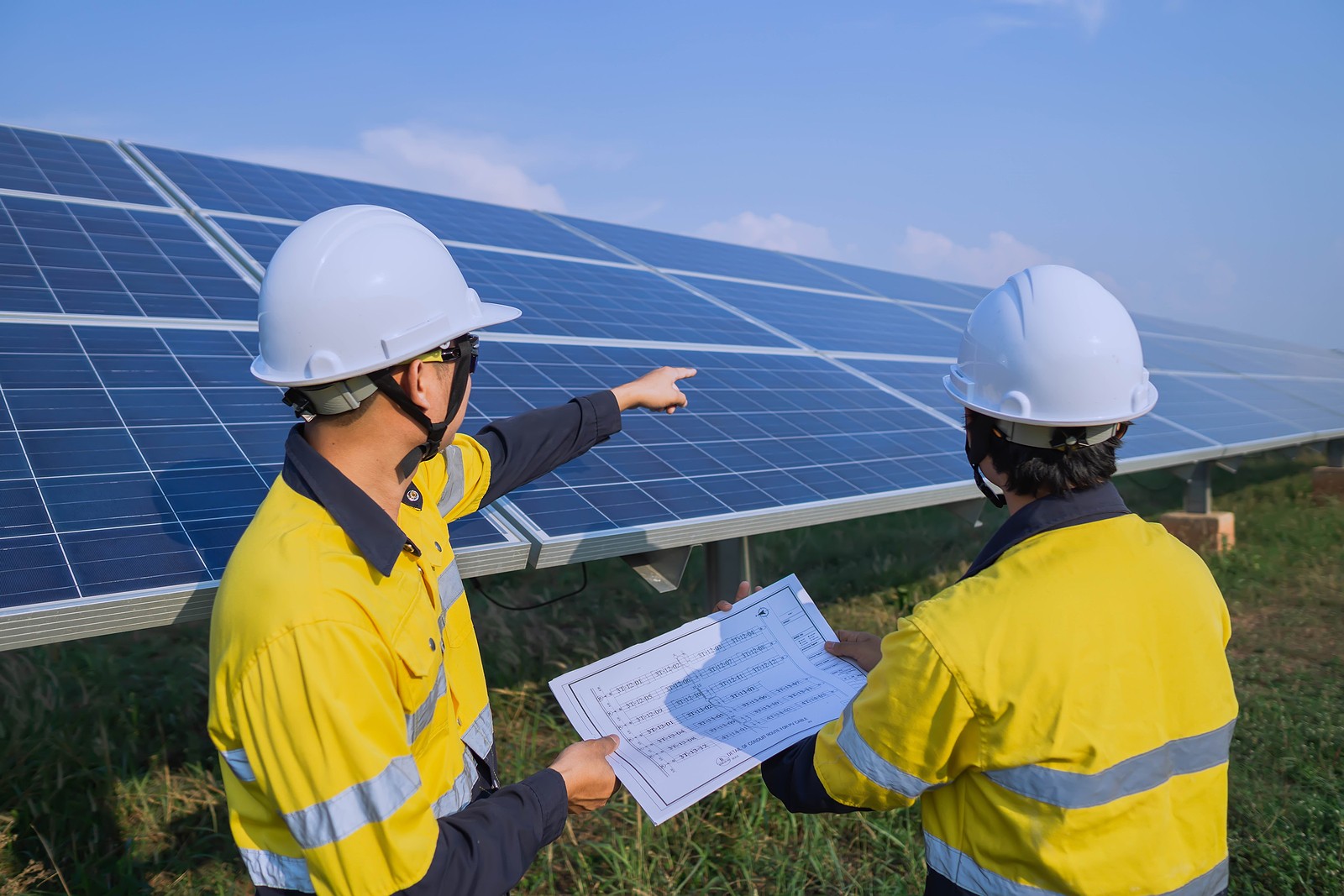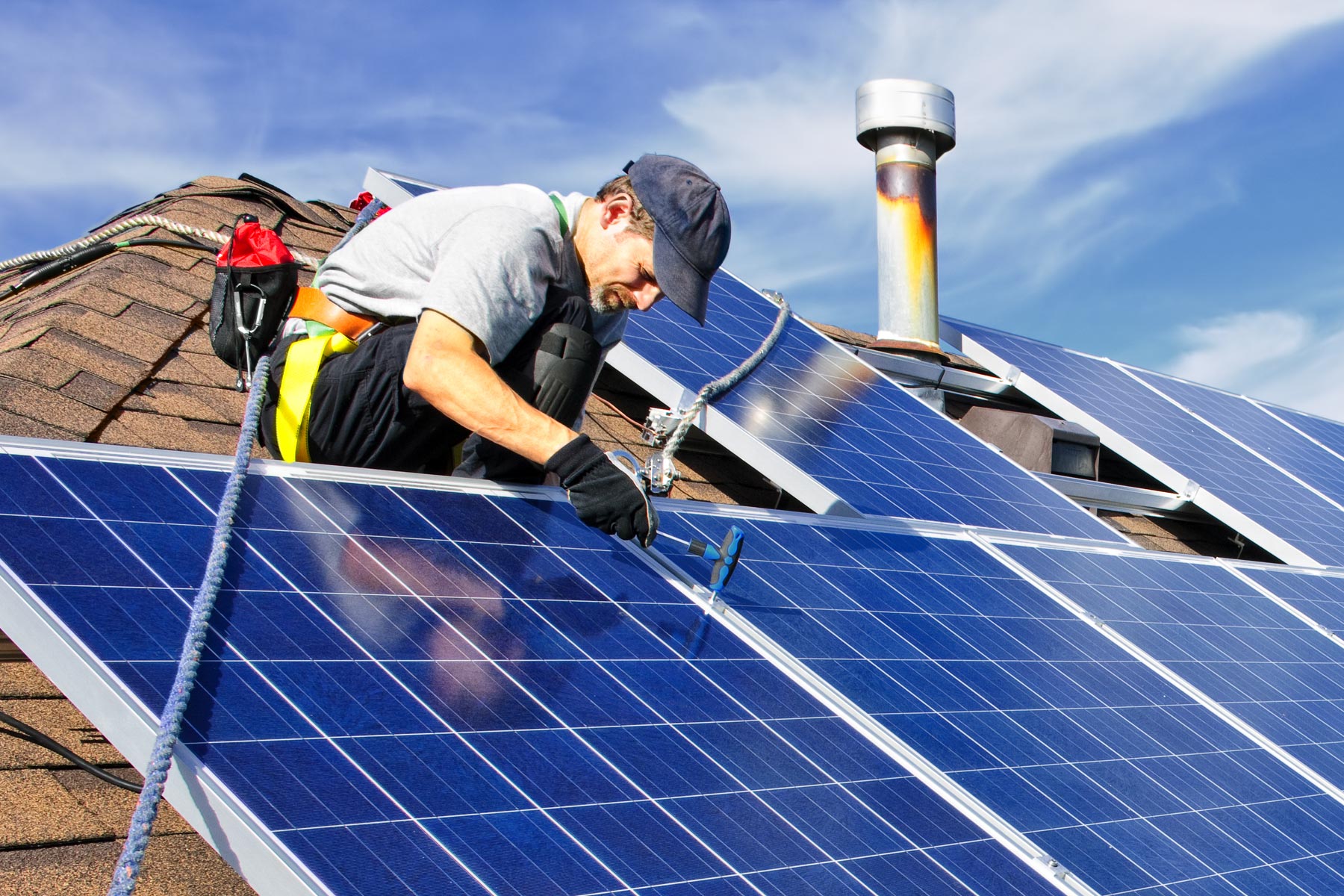Solar System Installation Near Me: Maintenance Tips After Solar Panel Installation
Solar Installation Near Me: Energy-Efficient Solar Solutions For Services Assist Decrease Operational Expenses And Promote Sustainability
Kinds Of Industrial Solar Panels
When diving into the world of business solar panels, it's like going into a bustling marketplace filled with varied options, each promising to harness the sun's unrelenting energy in its own unique way. However have you ever questioned why some panels seem more effective or appropriate for particular rooftops than others? The response lies in the very kind of solar panel picked.
Monocrystalline Solar Panels
Envision a panel born from a single crystal of silicon-- smooth, uniform, and efficient. That's the essence of monocrystalline solar panels. Understood for their high effectiveness and durability, these panels typically boast a deep black look, practically like a midnight canvas catching every photon. Companies that need optimal power output in minimal area often gravitate toward this type. However, the journey to develop these panels is complex, making them a bit steeper on the initial financial investment ladder.
Polycrystalline Solar Panels
On the other hand, polycrystalline photovoltaic panels are like a mosaic of silicon pieces, fused together in a less uniform pattern. They sparkle with a bluish color, showing their multi-crystal makeup. While they typically use slightly lower effectiveness than their monocrystalline cousins, they offset it with a more wallet-friendly cost. For sprawling industrial roofs where space isn't a pushing issue, these panels supply a compelling balance in between cost and efficiency. Ever noticed how a patchwork of blue tiles can illuminate a dull rooftop? That's polycrystalline doing its peaceful magic.
Thin-Film Solar Panels
There's the chameleon of the solar world: thin-film solar panels. Unlike the stiff silicon structures, these panels are light-weight, flexible, and can be applied to surface areas conventional panels can't touch. Their sleek style whispers possibilities-- curved exteriors, irregular roofs, even building-integrated photovoltaics. This flexibility comes with a trade-off: generally lower performance and a shorter lifespan. Still, for particular business applications, specifically where aesthetics meet development, thin-film panels are the dark horse worth thinking about.
Contrast Table of Commercial Solar Panel Types
| Type | Effectiveness | Cost | Appearance | Suitable Usage |
|---|---|---|---|---|
| Monocrystalline | High (15-20%) | Greater | Black, uniform | Minimal area, high output |
| Polycrystalline | Moderate (13-16%) | Moderate | Blue, speckled | Big roofs, cost-sensitive |
| Thin-Film | Lower (10-12%) | Lower | Varies, flexible | Ingenious designs, versatile surfaces |
Choosing the Right Panel: What Matters The majority of?
Is it performance? Resilience? Or perhaps the visual impact? In some cases, it's a blend of all three. For example, one industrial home owner I understand selected thin-film panels not due to the fact that they yielded the greatest wattage, however due to the fact that their structure's curved roofing demanded Solar System For Home versatility-- proof that the "finest" panel depends greatly on the job's distinct demands.

What's your industrial rooftop whispering to you? Are you chasing raw power or architectural beauty? The varied kinds of commercial solar panels make sure there's a match waiting-- if only you listen closely.
Preparation the Design: More Than Simply Panels on a Roofing system
Think of a chessboard. Each solar panel is a piece that needs to be strategically positioned to catch sunlight with surgical precision. The installation procedure for commercial solar systems typically starts with a detailed website evaluation. Professionals evaluate roof orientation, shading patterns, and structural stability. Did you know that a slight deviation in panel angle can slash effectiveness by up to 15%? It's not simply about slapping panels onto a rooftop; it's a complicated puzzle that demands insight and careful planning.
Step-by-Step Installation Breakdown

- Initial Website Study: Surveyors determine the home and collect data on sunshine direct exposure throughout the year.
- Style Phase: Engineers prepare a personalized layout, considering load-bearing limits and electrical requirements.
- Permitting Process: Browsing local approvals can be labyrinthine and lengthy.
- Installing System Setup: The foundation of the system, this structure should endure weather extremes without jeopardizing panel alignment.
- Panel Placement: Panels are protected with accuracy; each connection is evaluated rigorously to prevent energy loss.
- Electrical Electrical Wiring: Ranges from the selections to the inverter should be thoroughly insulated and protected.
- System Testing: Before flipping the switch, extensive efficiency checks ensure every cell works harmoniously.
Structural Factors to consider: When the Roofing Informs You No
Not all industrial roofing systems are solar-friendly. Often, the structure groans under the thought of included weight. It's not unusual for installers to encounter roofing system reinforcement needs. A misjudged weight distribution can result in pricey repairs or system failure. For flat roofing systems, ballasted installing systems-- utilizing heavy products to secure panels without roofing penetration-- offer a creative workaround, however they demand accurate calculations to avoid shifting or water pooling.
Specialist Tips for a Smooth Installation
- Perform a thermal imaging scan to identify concealed roofing system weak points before setup.
- Pick high-quality flashing materials to prevent water ingress around mounts.
- Plan channel paths early; avoid future interference with HVAC systems or pipes.
- Think about panel orientation fine-tunes for seasonal sun course changes, not just peak summertime.
Why Timing and Weather Matter More Than You Think
Morning fog or unexpected afternoon storms can turn a multi-day setup into a logistical headache. For industrial systems, setting up around local weather patterns is essential to prevent setup hold-ups. Here's a secret: some installers utilize drone innovation to monitor website progress and ecological conditions in real-time, enabling speedy adjustments to the job timeline. This blend of custom and innovation maximizes performance and ensures the system is operational sooner.
Unlocking the Power: Why Commercial Solar Panels Matter
Think of a vast service complex, its roofing system sparkling with photovoltaic panels taking in the sun's unrelenting energy. This isn't simply a pretty image-- it's a tactical move that translates to severe functional resilience. However why do savvy companies flock toward business solar panels? The answer lies beneath the surface of easy energy savings.
More than Just Lower Expenses
Yes, minimizing electrical power expenses is a headline benefit, however the story dives much deeper. Commercial solar setups act as a monetary anchor, stabilizing energy expenses versus the unforeseeable waves of market changes. Picture this: a manufacturing plant's electric expense spikes due to an unexpected rise in need, yet their solar array cushions the blow, keeping operations smooth and costs predictable.
Environmental Reliability that Pays Dividends
In today's eco-conscious market, the green qualifications of a service can sway consumers and partners alike. Utilizing solar power sends out a powerful message-- one that resonates with stakeholders who value sustainability. It's more than a badge; it's a beacon that can open doors to brand-new chances and partnerships.
Technical Edge and Performance
One ignored gem in commercial solar panels is their capability to integrate with wise energy management systems. This synergy enables organizations to monitor and enhance energy consumption in real-time, ejecting every watt of efficiency. It resembles having an alert energy steward working 24/7, making sure resources aren't wasted and operations remain lean.
Financial Versatility: Beyond the Apparent
Companies frequently think twice, anxious about upfront investments. Savvy enterprises comprehend that industrial solar panels can be structured through ingenious financing models that spread costs and accelerate return on financial investment. This strategic technique can change a substantial upfront cost into workable, foreseeable costs with time.
Expert Tips for Taking Full Advantage Of Advantages
- Conduct a detailed website assessment: Pinpoint the ideal panel positioning to take full advantage of sunlight exposure, representing seasonal changes.
- Use tiered inverter systems: This improves system durability-- if one inverter dips, others keep the energy flowing, minimizing downtime.
- Utilize energy storage solutions:
- Consider battery combination to harness kept solar power during peak need or interruptions, improving functional connection.
- Stay ahead with predictive analytics:
- Usage data-driven insights to expect upkeep requirements and avoid unforeseen dips in performance.
What's the Catch?
Let's face it-- setting up commercial solar panels isn't as easy as snapping fingers. Browsing the maze of installation logistics, roofing stability evaluations, and energy output forecasts requires a sharp eye and meticulous preparation. Does your roof angle capture enough sunshine throughout the year? Are shading and weather patterns represented? These questions can make or break the efficacy of the system.
| Benefit | Effect | Professional Insight |
|---|---|---|
| Energy Expense Reduction | Long-term functional cost savings | Net metering can enhance cost savings by exporting surplus energy. |
| Brand name Sustainability | More powerful market placing | Noticeable solar arrays function as a real-time environmental declaration. |
| Energy Self-reliance | Lowered vulnerability to grid failures | Coupling with battery storage improves backup power capabilities. |
Navigating the Intricacies of Commercial Photovoltaic Panel Release
Picture a vast roof, basking under the unrelenting sun, ready to be changed into a powerhouse of green energy. Underneath this appealing vision lies a maze of intricacies that can trip up even the most seasoned installers. One essential hurdle focuses on site evaluation. It's not almost slapping panels on a roofing; it has to do with translating the story the structure informs. Will the roofing system sustain the added weight? What about shadows cast by neighboring structures or trees that alter with the seasons? These aspects can silently sabotage the effectiveness of a system if ignored.
Structural and Environmental Considerations
Industrial structures frequently have diverse architectures, which suggests no two solar panel installations are the very same. A flat roofing system might appear ideal, however can it handle snow loads or heavy rainfall without jeopardizing stability? On the other hand, a sloped roofing might present angle difficulties that lower solar irradiance. Beyond the physical, ecological aspects require regard. Dust accumulation, bird droppings, and pollen are silent effectiveness killers. Comprehending regional climate nuances can spell the difference between peak performance and underwhelming output.
Permitting and Grid Interconnection: The Undetectable Labyrinth
When it comes to hooking a business planetary system to the grid, the documents marathon begins. It's a dance between energies, municipalities, and often federal bodies, each with their own pace. Hold-ups and unanticipated requirements can stall progress forever. Have you ever wondered why some tasks stretch on for months? The answer typically lies hidden in this bureaucratic web. Anticipating these procedural intricacies in advance can conserve weeks, if not months, of downtime.
Specialist Tips for Easier Deployment
- Conduct numerous shading analyses at various times of the year to predict seasonal efficiency dips.
- Engage structural engineers early to assess roof load capabilities and suggest supports if needed.
- Establish strong interaction channels with local energies to preempt hold-ups in grid affiliation approvals.
- Leverage advanced modeling software application that simulates environmental effects over the system's life-span.
- Prepare for modular scalability to accommodate future growth without major overhauls.
Financial Forecasting Beyond Initial Expenses
It's appealing to focus purely on upfront investment, however industrial solar projects often face unexpected expenses. Surprise expenditures lurk in system optimization tweaks, unexpected structural reinforcements, or even extending timelines due to administrative downturns. A savvy designer always builds in a contingency buffer. This monetary flexibility guarantees the job does not buckle under the weight of unanticipated turns.
| Typical Implementation Element | Possible Complication | Proactive Technique |
|---|---|---|
| Site Gain access to | Limited or harmful areas | Pre-installation site walkthroughs and run the risk of evaluations |
| Equipment Delivery | Logistical hold-ups due to large elements | Coordinate with suppliers for staged shipment |
| Weather | Unforeseen storms or heatwaves | Flexible scheduling and real-time weather monitoring |
Deploying business photovoltaic panels isn't a linear journey; it's a dynamic puzzle needing insight, flexibility, and a deep understanding of both innovation and terrain. The benefit? A resilient system that not just powers a company but likewise champs sustainability in a loud, fossil-fueled world.